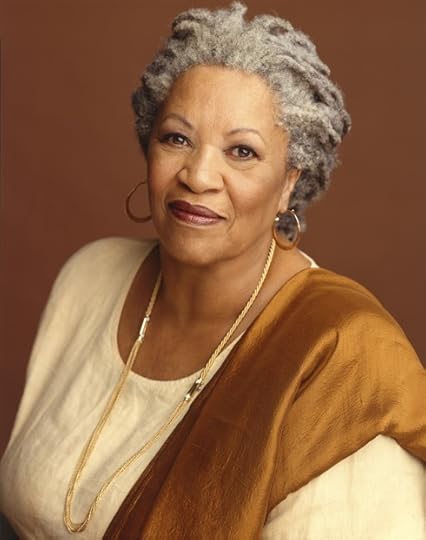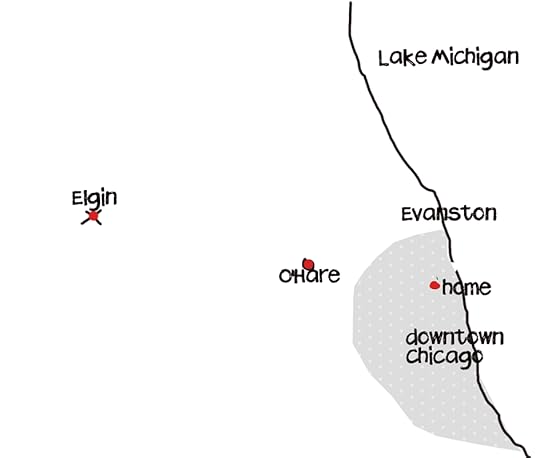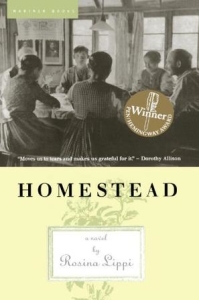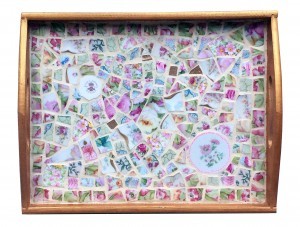Rosina Lippi's Blog, page 8
November 25, 2016
The historical novelist’s nightmare
If you’ve followed my ramblings at all you’re aware that I take research really seriously. Most historical novelists have this quirk, in my experience. Most of us have at least a dollop of ocd, would be my guess.
When I’m working out themes or major plot lines I am especially careful with my background research. So for example, I read widely about the development of sterile techniques in medicine after Lister’s work began to be accepted. Something that really jumped out at me early in my research was the fact that until late in the 1800s doctors and nurses operated with bare hands. There were no rubber gloves, and so they had to dig right in, bare handed. The idea makes me a little woozy, to be truthful. I can watch any kind of surgery without a problem, but I can’t quite cope with the idea of a bare hand digging into an abdomen to locate a tumor.
Because physicians and nurses understood about contagion and the importance of sterile technique, they went to extremes in washing their hands. They used a combination of antibacterial solutions, many of which were highly abrasive and corrosive, which played havoc with skin and nails and caused all kinds of problems. This is actually a famous paragraph in the history of medical science, written by William Halsted (full citation to be found here).
In the winter of 1889 and 1890—I cannot recall the month—the nurse in charge of my operating-room complained that the solutions of mercuric chloride produced a dermatitis of her arms and hands. As she was an unusually efficient woman, I gave the matter my consideration and one day in New York requested the Goodyear Rubber Company to make as an experiment two pair of thin rubber gloves with gauntlets. On trial these proved to be so satisfactory that additional gloves were ordered. In the autumn, on my return to town, an assistant who passed the instruments and threaded the needles was also provided with rubber gloves to wear at the operations. At first the operator wore them only when exploratory incisions into joints were made. After a time the assistants became so accustomed to working in gloves that they also wore them as operators and would remark that they seemed to be less expert with the bare hands than with the gloved hands.
 an original surgical rubber glove
an original surgical rubber gloveIt wasn’t until 1892 this venture started by Halsted came to pass and the first rubber gloves were used in surgery — by the nurse Halsted mentions in the excerpt above, the woman we went on to marry in a twist worthy of any romance novel. Dermatitis My Love. You can read the whole story of how he circumvented this problem in an article called Venus & Aesculapius: The Gloves of Love at Discovery Magazine.
it wasn’t until the end of the century that sterile gloves were widely used by surgeons as well as nurses.
If you have read The Gilded Hour you will remember that both Anna and Sophie deal with this issue, which will evolve into a bigger plot point in Where the Light Enters.
Now, with all that in mind, consider this excerpt I came across today:

My blood pressure must have jumped twenty points when I read that. Now, I knew this had to be a mistake — which it is — but it certainly got my attention because if it were true and rubber gloves had been in use in operating rooms by 1882, I’d have some finagling to do.
Consider this a tempest in a teapot, if you like. I think of it as a reminder (to myself) that my ocd actually serves a good purpose.

The historical novelist’s nightmare: sloppy researchers
If you’ve followed my ramblings at all you’re aware that I take research really seriously. Most historical novelists have this quirk, in my experience. Most of us have at least a dollop of ocd, would be my guess.
When I’m working out themes or major plot lines I am especially careful with my background research. So for example, I read widely about the development of sterile techniques in medicine after Lister’s work began to be accepted. Something that really jumped out at me early in my research was the fact that until late in the 1800s doctors and nurses operated with bare hands. There were no rubber gloves, and so they had to dig right in, bare handed. The idea makes me a little woozy, to be truthful. I can watch any kind of surgery without a problem, but I can’t quite cope with the idea of a bare hand digging into an abdomen to locate a tumor.
Because physicians and nurses understood about contagion and the importance of sterile technique, they went to extremes in washing their hands. They used a combination of antibacterial solutions, many of which were highly abrasive and corrosive, which played havoc with skin and nails and caused all kinds of problems. This is actually a famous paragraph in the history of medical science, written by William Halsted (full citation to be found here).
In the winter of 1889 and 1890—I cannot recall the month—the nurse in charge of my operating-room complained that the solutions of mercuric chloride produced a dermatitis of her arms and hands. As she was an unusually efficient woman, I gave the matter my consideration and one day in New York requested the Goodyear Rubber Company to make as an experiment two pair of thin rubber gloves with gauntlets. On trial these proved to be so satisfactory that additional gloves were ordered. In the autumn, on my return to town, an assistant who passed the instruments and threaded the needles was also provided with rubber gloves to wear at the operations. At first the operator wore them only when exploratory incisions into joints were made. After a time the assistants became so accustomed to working in gloves that they also wore them as operators and would remark that they seemed to be less expert with the bare hands than with the gloved hands.
 an original surgical rubber glove
an original surgical rubber gloveIt wasn’t until 1892 this venture started by Halsted came to pass and the first rubber gloves were used in surgery — by the nurse Halsted mentions in the excerpt above, the woman we went on to marry in a twist worthy of any romance novel. Dermatitis My Love. You can read the whole story of how he circumvented this problem in an article called Venus & Aesculapius: The Gloves of Love at Discovery Magazine.
it wasn’t until the end of the century that sterile gloves were widely used by surgeons as well as nurses.
If you have read The Gilded Hour you will remember that both Anna and Sophie deal with this issue, which will evolve into a bigger plot point in Where the Light Enters.
Now, with all that in mind, consider this excerpt I came across today:

My blood pressure must have jumped twenty points when I read that. Now, I knew this had to be a mistake — which it is — but it certainly got my attention because if it were true and rubber gloves had been in use in operating rooms by 1882, I’d have some finagling to do.
Consider this a tempest in a teapot, if you like. I think of it as a reminder (to myself) that my ocd actually serves a good purpose.

November 23, 2016
Techno Fail: Missing FAQ
I had a very long and detailed FAQ page at one point not so long ago, but as sometimes happens with a weblog this old and cantankerous, it seems to have crawled away to die in a hidey-hole somewhere.
Before you ask: yes, I have backups. But there are technological complications with plugins you really don’t care to hear about. The bottom line: in time I should be able to reconstruct most of the faq page — I did a little of that today. But it also occurs to me that I get a lot of questions and I haven’t added any to the faq page in yonks, as my Brit friends might say. Thus: if you have a moment to look at the sadly denuded FAQ Page, please take a minute to send a note with a question you’d like to see included. Or that you once saw here, but is now missing.

November 22, 2016
Toni Morrison at 85, and life goals
 In February Toni Morrison turned 85. I did mean to post about it back then, and just yesterday realized that I had missed the date by something close to a year. Luckily she’s still out there writing things that need to be read. So for example, an essay about the election called Mourning for Whiteness. Toni Morrison has never shied away from difficult topics.
In February Toni Morrison turned 85. I did mean to post about it back then, and just yesterday realized that I had missed the date by something close to a year. Luckily she’s still out there writing things that need to be read. So for example, an essay about the election called Mourning for Whiteness. Toni Morrison has never shied away from difficult topics.
I would love to come and help out wherever Ms Morrison is having Thanksgiving, because I think it would be an education of a very rare and valuable kind to be able to listen to her talk to her nearest and dearest. To hear her tell stories would be the perfect compliment to reading her stories, the novels that have so moved me over the years. Toni Morrison speaks from a heart of gleaming ebony; she speaks the language of her community.
When the Oakland African American English controversy was washing over the country, Ms Morrison was one of the few prominent black academics and role models who did not give in to that full-blown moral panic; she did not reject the language she is most comfortable with or the children who speak it. Jesse Jackson said some harsh and destructive things about African American English, which was rather ironic as he is a main speaker of that language.
Toni Morrison has always talked about the power of African American English and its importance, as in this 1981 interview:
The language, only the language. The language must be careful and must appear effortless. It must not sweat. It must suggest and be provocative at the same time. It is the thing that black people love so much—the saying of words, holding them on the tongue, experimenting with them, playing with them. It’s a love, a passion. Its function is like a preacher’s: to make you stand up out of your seat, make you lose yourself and hear yourself. The worst of all possible things that could happen would be to lose that language. There are certain things I cannot say without recourse to my language. It’s terrible to think that a child with five different present tenses comes to school to be faced with those books that are less than his own language. And then to be told things about his language, which is him, that are sometimes permanently damaging. He may never know the etymology of Africanisms in his language, not even know that “hip” is a real word or that “the dozens” meant something. This is a really cruel fallout of racism. I know the standard English I want to use it to help restore the other language, the lingua franca.
Ms Morrison is someone I admire greatly, for her courage and power as a writer and a woman and a woman of color. I hope she glides along to ninety trailing essays and novels and stories behind her.
This quote from her is the truest thing I know about writing.


November 17, 2016
Elgin Literary Festival: See you there.
 I’ll be speaking at the 2017 Elgin Literary Festival, January 26-27. Elgin is way out of the city (as you can see) but it’s still close enough to Chicago to count as home. After the festival I’ll be hanging out in the city with cousins and old friends. And Jimmy Dean will be my traveling companion.
I’ll be speaking at the 2017 Elgin Literary Festival, January 26-27. Elgin is way out of the city (as you can see) but it’s still close enough to Chicago to count as home. After the festival I’ll be hanging out in the city with cousins and old friends. And Jimmy Dean will be my traveling companion.
If you’re in the area please have a look at the festival information. Maybe something will catch your eye. Be sure to stop and say hey, if that’s the case.


November 3, 2016
Visualizing Poverty

An impoverished woman in St Giles, looking after the baby of a friend who has been lucky enough to find a day’s work. Picture: Museum of London
I depend a lot on images from museums when I’m trying to get a scene down that’s evading me. This particular photo has always worked to remind me what it means to be poor.

November 2, 2016
Aspiring Writers Ask Questions
 When I have a few minutes and I come across an ad for a conference marketed to self-publishing writers, I go have a look. I admit I am cynical, but I am also willing to be convinced that these are legitimate offerings.
When I have a few minutes and I come across an ad for a conference marketed to self-publishing writers, I go have a look. I admit I am cynical, but I am also willing to be convinced that these are legitimate offerings.
For example: the San Francisco Writers Conference has got me wondering. It runs for three days, costs $750 plus hotel, travel and $60 if you want to do the speed dating for agents thing. One part of what they list on the website front page:
Launch your writing career–or take it to a more professional level.
Choose the sessions you want from a schedule of workshops and panels that fit your specific writing needs and goals.
Learn about a wide range of publishing options from leaders in self-publishing and traditional publishing.
Get your questions answered at the Ask-a-Pro session featuring New York and California editors…included in your registration fee.
Go to Speed Dating for Agents – Pitch your book ideas one-on-one in a room full of literary agents ($60 option for registered attendees only). Since the literary agents at SFWC are on the lookout for new clients, you may find the perfect agent for you and your book.
Receive free editorial feedback on your work from freelance book editors. Click HERE for the FAQ sheet!
Build your personal writing community at SFWC’s onsite Cafe Ferlinghetti with writers from all over the United States…and other countries, too.
There are opportunities to talk to other people who are pursuing self-publishing, of course, and to the hundred or so exhibitors who are there to sell their services. Freelance editors, for example. I’m guessing there will be many opportunities to hire people to help you with marketing and book design, as well. I don’t know if there are any reliable statistics out there about how much money people invest in getting self published, but it would be helpful to have such figures.
If you went to this conference you might decide not to invest in any of those services, and be satisfied with what you learn in the three days. There are some well established and respected authors on the roster.
But there are some red flags. First and foremost: At the bottom of the page you’ll see that this horizontal list of links to more information:

Beyond the typo in San Francisco, the real problem here is the link to San Francisco Writers University. The link goes nowhere, which might mean they are having server problems, but then (according to Google) no such university exists. Which makes me wonder about the non profit status as a 509(a)(2) organization.
My understanding is that this non-profit status is for organizations that exist to support organizations with full non-profit status, such as schools. Or universities. So the question is, if San Francisco Writers University doesn’t exist, which organization is being supported?
My advice to anyone interested in self-publishing is to be very careful about this kind of offering. Ask a lot of questions. Ideally they would let you get in touch with other people who have attended in the past. Ideally, they would have statistics to offer on how many people published (and how successfully) or found an agent following from the conference. I would want to know how much time that the featured authors spend mingling, or if they are only present for the classes or panels they participate in. And I would certainly want to know about the San Francisco Writers University.
If you’ve been to this conference and have something to say, please do comment.

October 31, 2016
Homestead and the Orange Prize

PEN/Hemingway Award; Short-listed for Britain’s Orange Prize and available as a Kindle edition at Amazon.
When Homestead was shortlisted for Britain’s Orange Prize this poster (below) was seen in bookshop windows all over England, something I completely forgot. I do remember the whole Orange Prize extravaganza, which was very mardi-gras like, right in the middle of London. There were men in peacock costumes on stilts, and acrobats overhead, and very nice canapés. And a £50,000 prize, which apparently I came very close to getting.
My parents-in-law put the poster up on their wall back then, and it’s still there now. I couldn’t figure out how to get it home at the time and only vaguely remembered it, so the Mathematician took a photo while he was visiting his mother.*
So for posterity’s sake, here it is.
While we’re talking, I’d like to thank everybody who has taken the time and energy to write to me and/or to post positive reviews on Amazon, Goodreads, and similar places for all the various novel-y things I’ve got out there. Every little bit helps.
*He also took a photo of this mosaic tray I made for one of his parent’s anniversaries, maybe fifteen years ago. Turned out pretty well, I think. Click for a bigger image.
Tweet

October 30, 2016
25 years ago just before Halloween
There’s a story on the Huffington Post today focusing on miscarriage: Six Women Remember the Babies They Lost. The timing on this story is particularly relevant to me, and the topic is personal.
Twenty-five years ago this weekend I had the first of four miscarriages. At that time there was even less support than there is today for women suffering such losses. I remember trying to talk to people — friends, family members — and being gently told to put it behind me. You’ll have another baby. Focus on the positive. The most common response I got was awkward silence. I needed to tell someone what had happened, but no one wanted to hear. There were no support groups. There was very little in print. There was no internet and no way to find women who were as isolated as I was in my anger and sorrow.
It seems that finally this may be changing a little, and so I’m taking this chance. Here’s the story I didn’t get to tell.
This was my second pregnancy, planned so that the new baby would come just about the time our daughter turned three in the spring of 1992. I got pregnant as soon as we started trying, and I remember thinking that maybe this time it wouldn’t be so traumatic. My first pregnancy was complicated when I went into labor at twenty six weeks and spent the next two and a half months on bed rest, rousing every three hours to take a medication to keep my contractions down to one every half hour, and shuttling back and forth between home and triage at the labor and delivery unit of the University of Michigan’s Women’s Hospital. In the end we went home with a healthy baby. Going into my second pregnancy I told myself I could handle it if it happened again.
At eleven weeks I got out of the shower and noticed an odd rash on my side. I drew a picture of it because it made me anxious.
At twelve weeks the rash had almost faded away, and I began spotting. Two days later an ultrasound confirmed that the baby’s heart had stopped beating. They sent me home to wait, because they believed medical intervention was not strictly necessary. The standard line was something like your body will take care of it.
I asked about the rash, and showed them the drawing. They shrugged. No way to know, they said. Nobody seemed to think it was relevant to the miscarriage.
[image error]
Halloween, age two
I did as I was told. This was right before Halloween, so for two days I waited and tried to function normally. A two year old who was excited about her costume and trick-or-treating was a pretty good distraction, but not good enough. We went on a hayride and got a pumpkin. It was very cold in Michigan, so when I got teary I could put my gloves to good use and get rid of the evidence. At night I worked on an elf costume because I couldn’t sleep anyway. She came to sit on my lap in the morning and patted my face. She said, “Kiss it better?”
[image error]I said, “Yes please,” and she kissed my cheek and went away to admire her costume. There was a Hannah Andersen cap — too costly, really, but I got it and added pointy felt ears and a pompom and bells. Very solemnly she considered this thing I had labored over for so long, and then politely declined to wear it. I remember thinking, I should be disappointed. But I couldn’t figure out how to feel anyway about it at all.
Two days after Halloween I was still spotting, heavily. I called my midwife and said I couldn’t stand it anymore, I wanted a D&C. She promised she would talk to the doctor on call at the hospital.
A short while later that doctor called me back. She said, It would be better to let your body take care of it. I was hardly coherent at that point but I was beyond caring what kind of impression I made. Finally she said, Oh, I get it. You want a D&C for your mind. They scheduled a D&C for two days later. No, they couldn’t get me in any sooner. Did I want some medication to help me sleep in the meantime? I did not.
Then the next day, very suddenly, my body did in fact take care of it, and left us with a small being curled into itself, maybe two inches long, that I managed to catch before it landed in the toilet. I sat there for a long time considering. Then I went out and showed my husband, and he cried, and I cried, and in the end we buried that would-be child in the back yard of the house we were renting and I remember thinking, how will we ever move away?
Six months later I had another miscarriage, this time at nine weeks. I started treatment with a reproductive endocrinologist who specialized in secondary infertility. He looked at my drawing of the rash and shrugged.
I had four miscarriages in all, and then I stopped trying. There were other treatments that might have worked, but I couldn’t face any more losses. At home I sat down with a very serious four year old and told her that I couldn’t have any more children. She was very angry, and insisted I go back to the doctor and tell him he was wrong. As much as we tried to protect her from the trauma of the miscarriages and infertility treatment, she absorbed a great deal of it with repercussions that are still felt today.
[image error]Once the internet became more user friendly for medical research, I started searching dermatology websites and databases for photos of my rash. It wasn’t until 2008 that I found what I was looking for in a medical journal article that came out that year:
Drago, F. et al. Pregnancy outcome in patients with pityriasis rosea. J Am Acad Dermatol 2008 May; 58:S78.
I had an outbreak of Pityriasis Rosea very early in my second pregnancy. The 2008 study:
demonstrates a high risk for fetal loss and for neonatal weakness and hypotonia in pregnancies affected by PR during the early weeks of gestation. Clinicians should alert women who develop PR in pregnancy about the potential risks of this presumed viral infection, although there is no known effective intervention to prevent these complications. Nor is there a clear way to avoid this illness. The detailed study of the miscarried fetus suggested reactivation of HHV-6, rather than primary infection, based on observation in the mother of specific serum IgG antibody but no IgM antibody.
For weeks after I found this — and similar articles — I told my husband, but otherwise kept it to myself. I wasn’t in therapy at the time, but I doubt I would have brought it up to a therapist even if I had been seeing one. Nobody wanted to talk to me about the miscarriages when they happened, I told myself. They probably forgot all about them. So why raise this subject?
I’m interpreting the article in the Huffington Post as a cosmic push to record my experience for myself, for my daughter, and for other women who have been or will be in this situation. There’s no way to predict or prevent Pityriasis Rosea, but at least now a woman who loses her child because of it will not be left with questions nobody want to hear, and nobody can answer. I’m telling the story because while other people forget, I remember every one of my losses. I remember the day the bleeding started, the day the heartbeat stopped, and the empty birthday. I remember the look on the ultrasound technician’s face when she didn’t find what she was looking for. I remember my husband saying, what are we looking at? I remember thinking, nothing. We are looking at nothing. The absence of a heartbeat.
I remember that on the due date for that first loss, the most traumatic of them all, my sister-in-law called to say that she was pregnant. I remember that I started spotting for the fourth and last loss on my daughter’s fourth birthday. Every Halloween I remember that elf costume and the red cap that I bought, and how I planned to put it aside and use it for the next baby.
Tomorrow is Halloween. We are out in the county on a dead-end road and never see any trick-or-treaters. And that’s a relief.
Tweet

October 25, 2016
Story Prompt: Newes from the Dead
Anne Greene
Whores of Yore (yes, a catchy title) at Twitter is stuffed to the gills with crazy interesting historical tidbits having to do with women’s lives and sexuality. The description on Twitter: ‘A catalogue of jilts, cracks, prostitutes, night-walkers, whores, she-friends, kind women & others of the linnen-lifting tribe.’ (18+)’
Often the bits posted there are just too good for a storyteller to ignore, as is the case with the life of Anne Greene. If you have been looking for material for a historical novel, this might be it. It’s true that Iain Pears’ An Instance of the Fingerpost includes a character based on Anne, but she is peripheral in that otherwise very dense and challenging novel.
The case is so interesting that there was an 1982 article about it in the British Medical Journal: “Miraculous deliverance of Anne Green: an Oxford case of resuscitation in the seventeenth century” which you can download as a pdf.
Anne was convicted of infanticide and hanged. The next day when the anatomists were getting ready to start a post-mortem exam, they realized she was still breathing. This was considered a miracle and act of God, and she was pardoned. Her father saw the possibilities, and once she returned home, starting charging people to come have a look at her. From the BMJ article:
This collection and a subsequent financial appeal on her behalf produced many pounds, which paid the bill of the apothecary, her food and lodging, and the legal expenses of her pardon. Anne Green’s fame continued after her full recovery, when she returned to some friends in the country taking with her the coffin in which she had lain. She then married, bore three children, and lived for 15 years after her famous execution and resuscitation.
If I were to take this on, I’d start with the day she was revived and the aftermath. I keep wondering what use she made of that coffin.
Tweet






